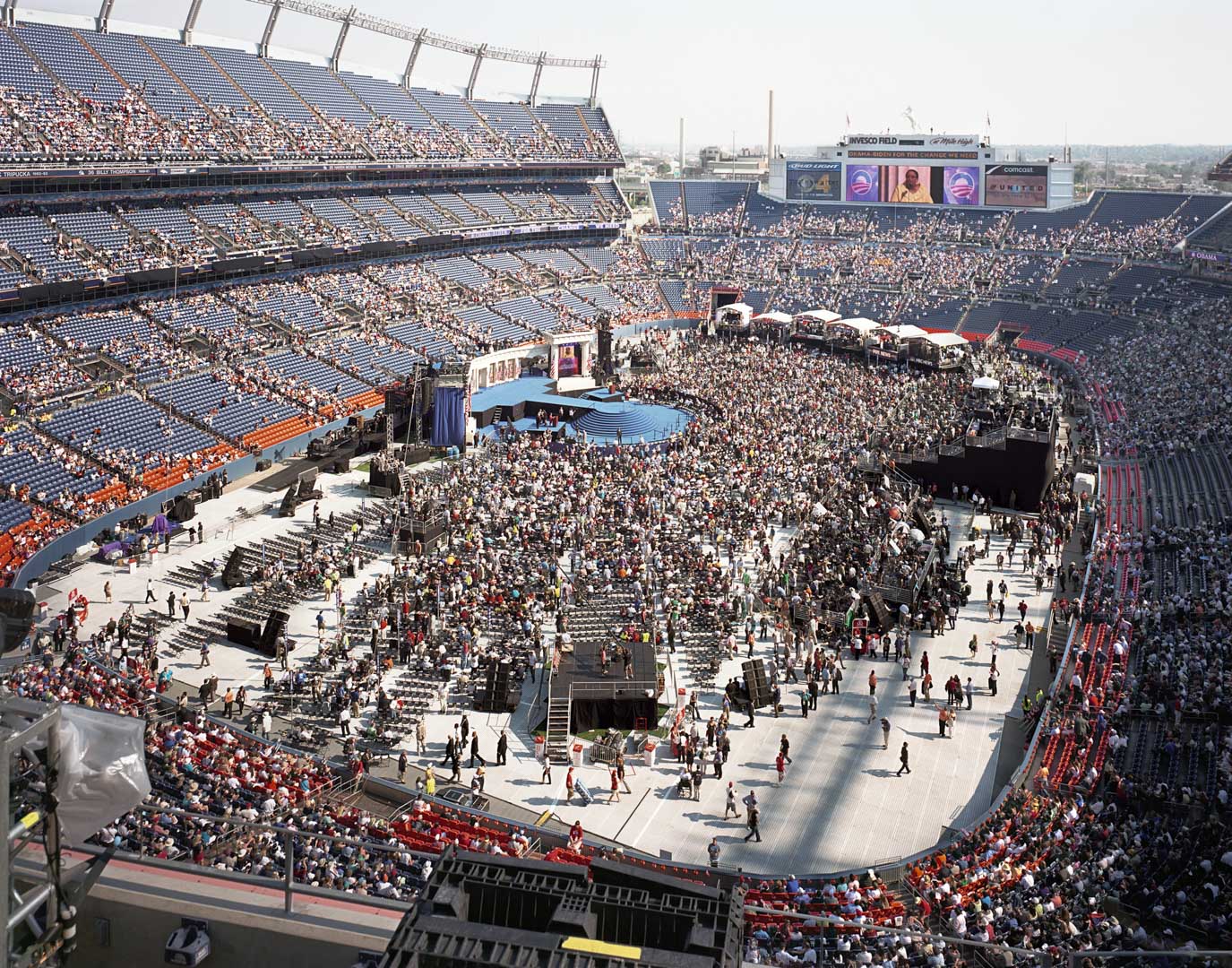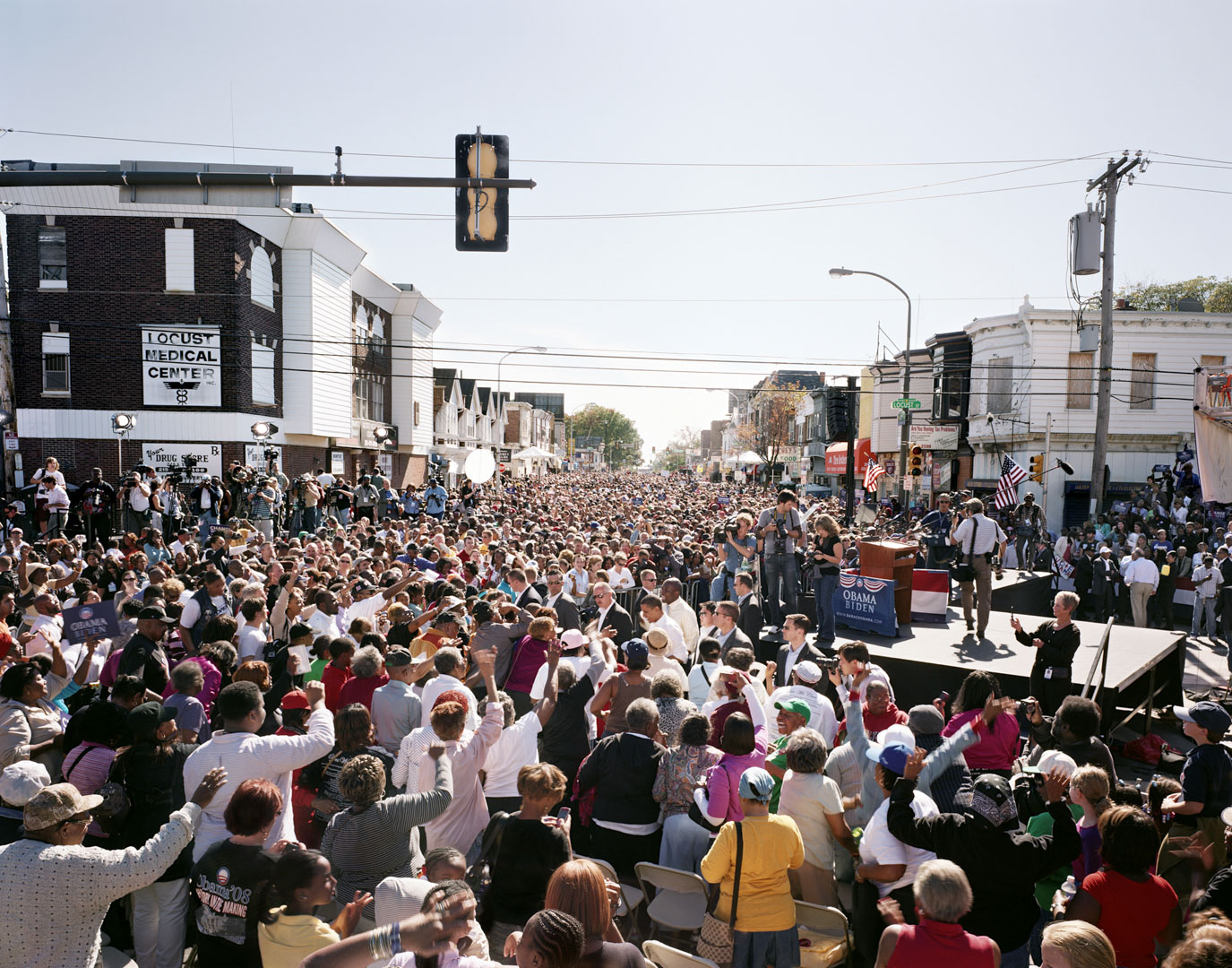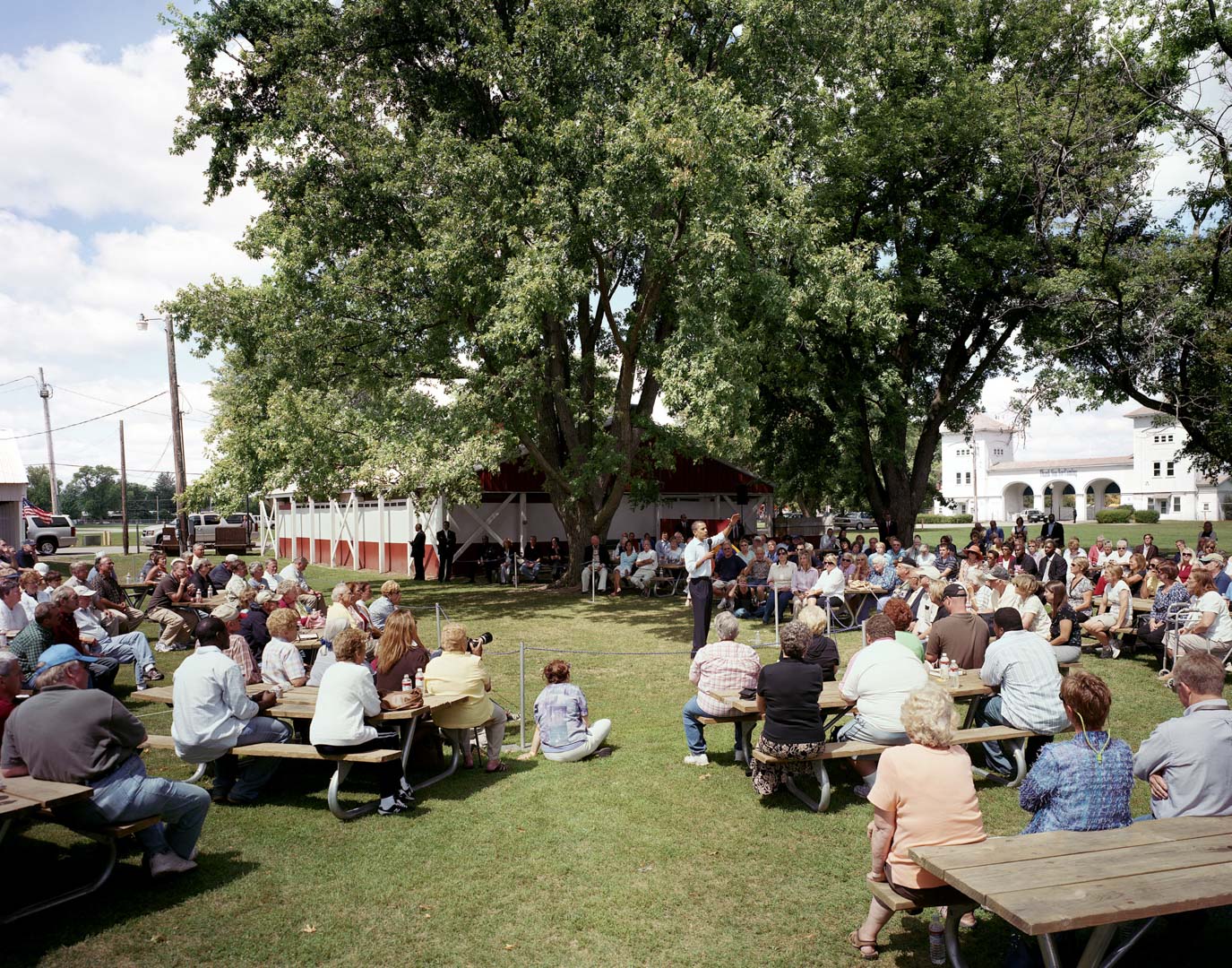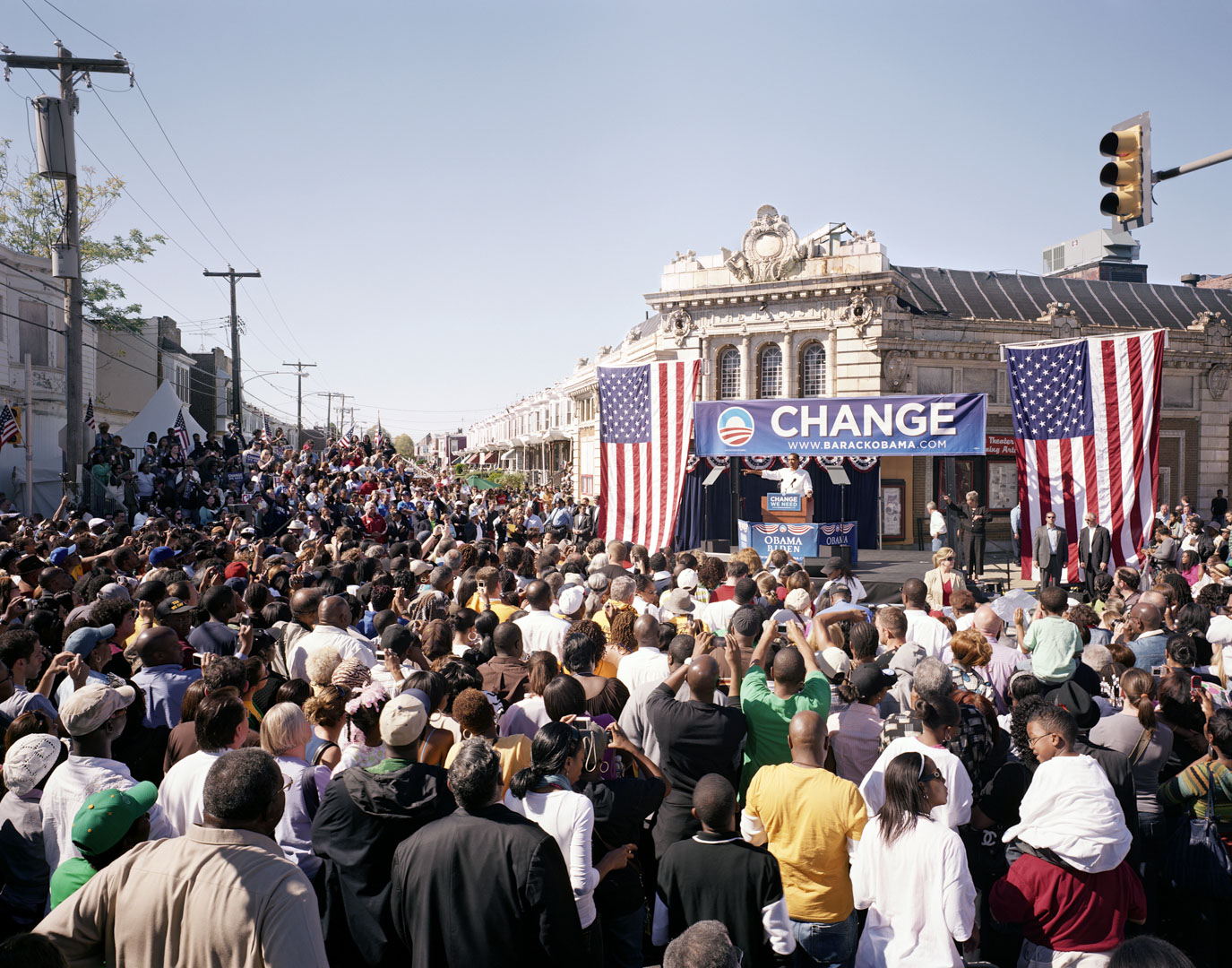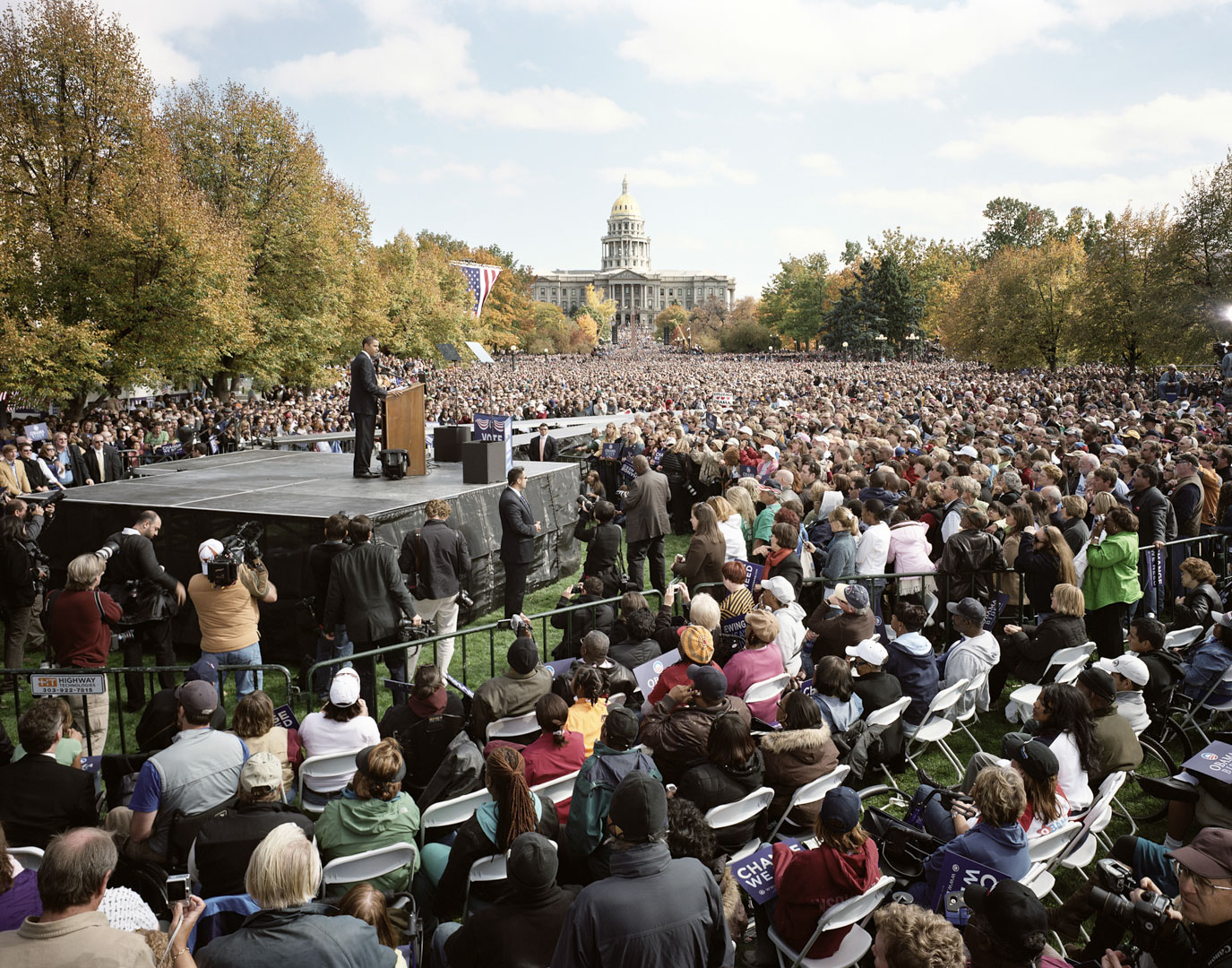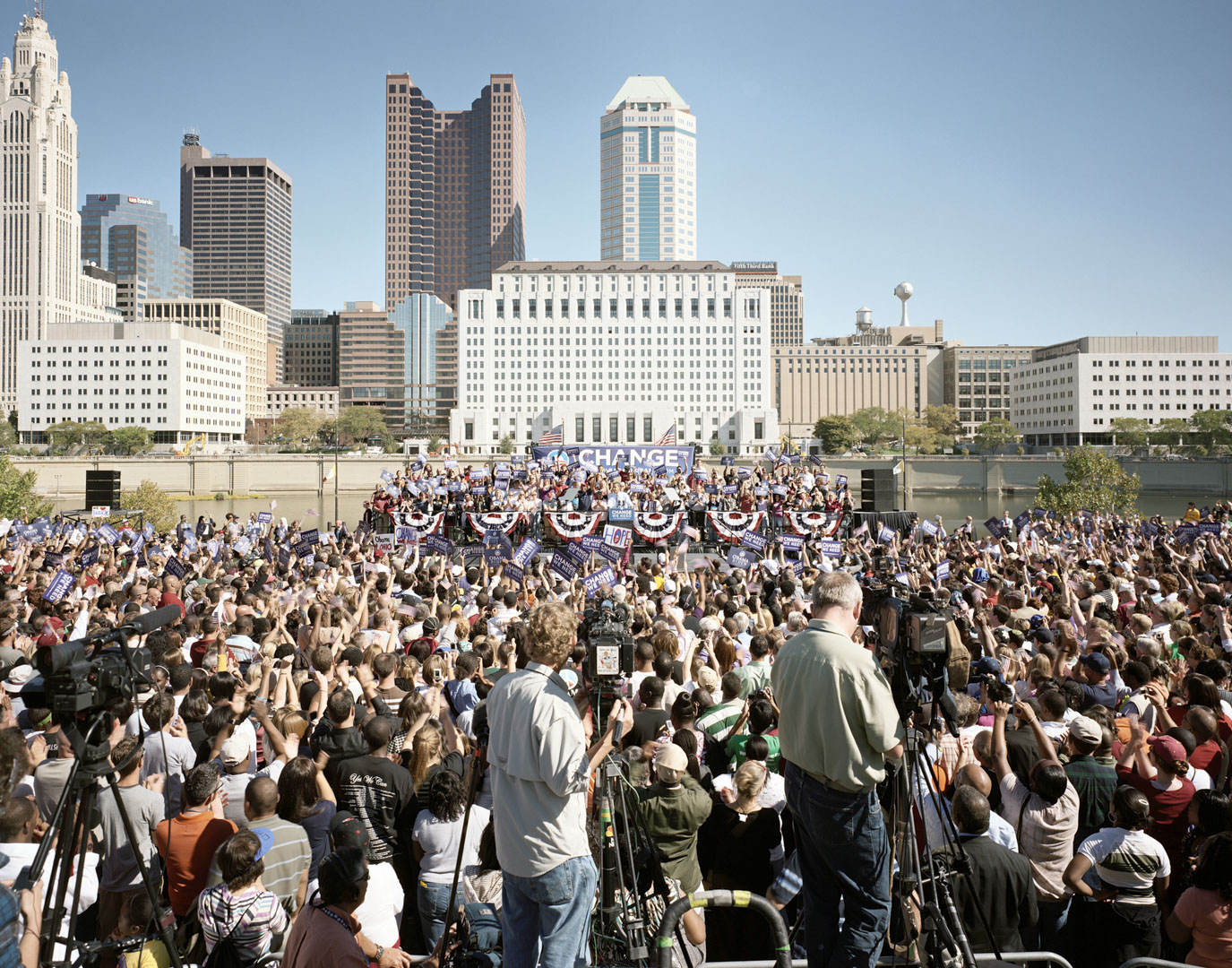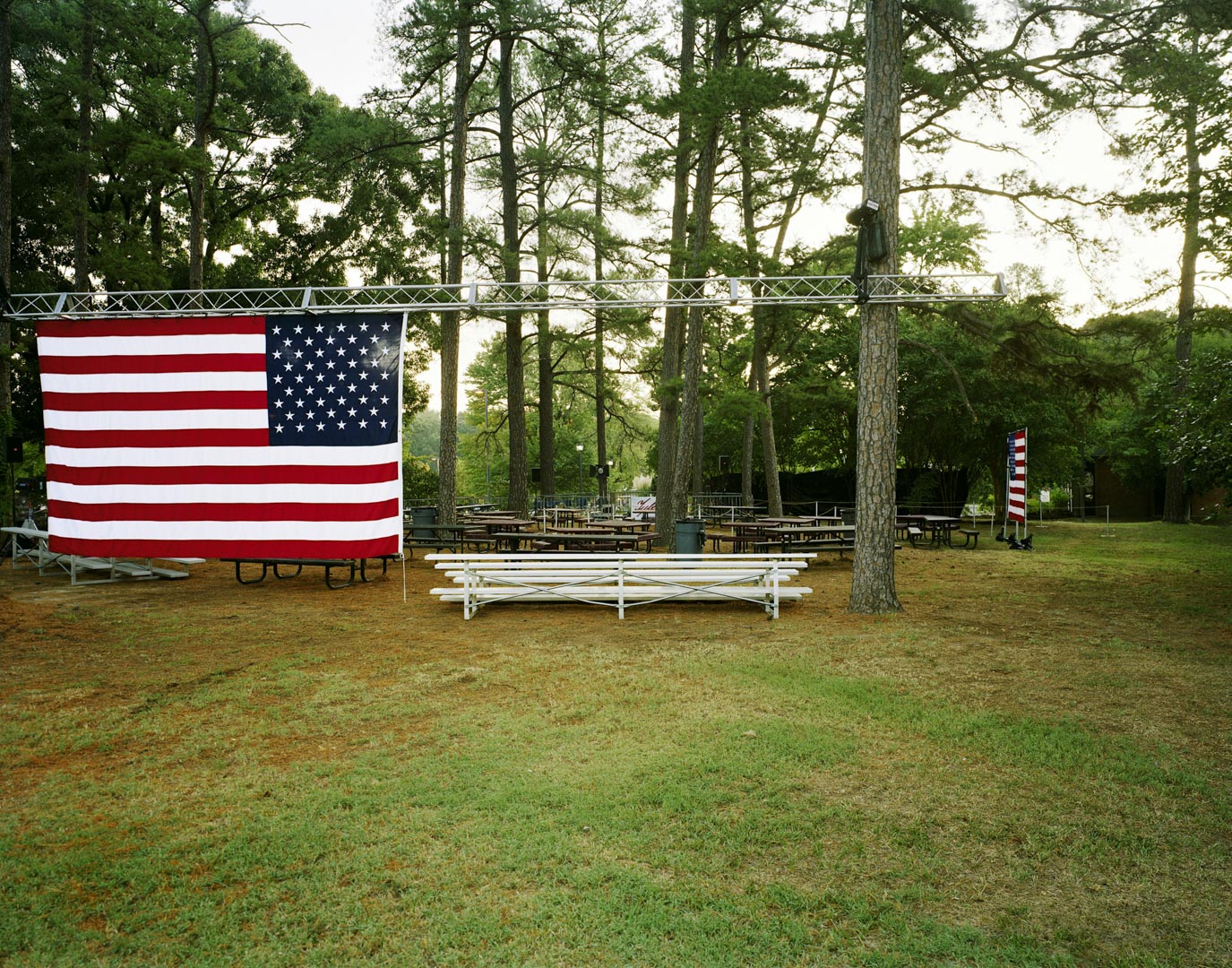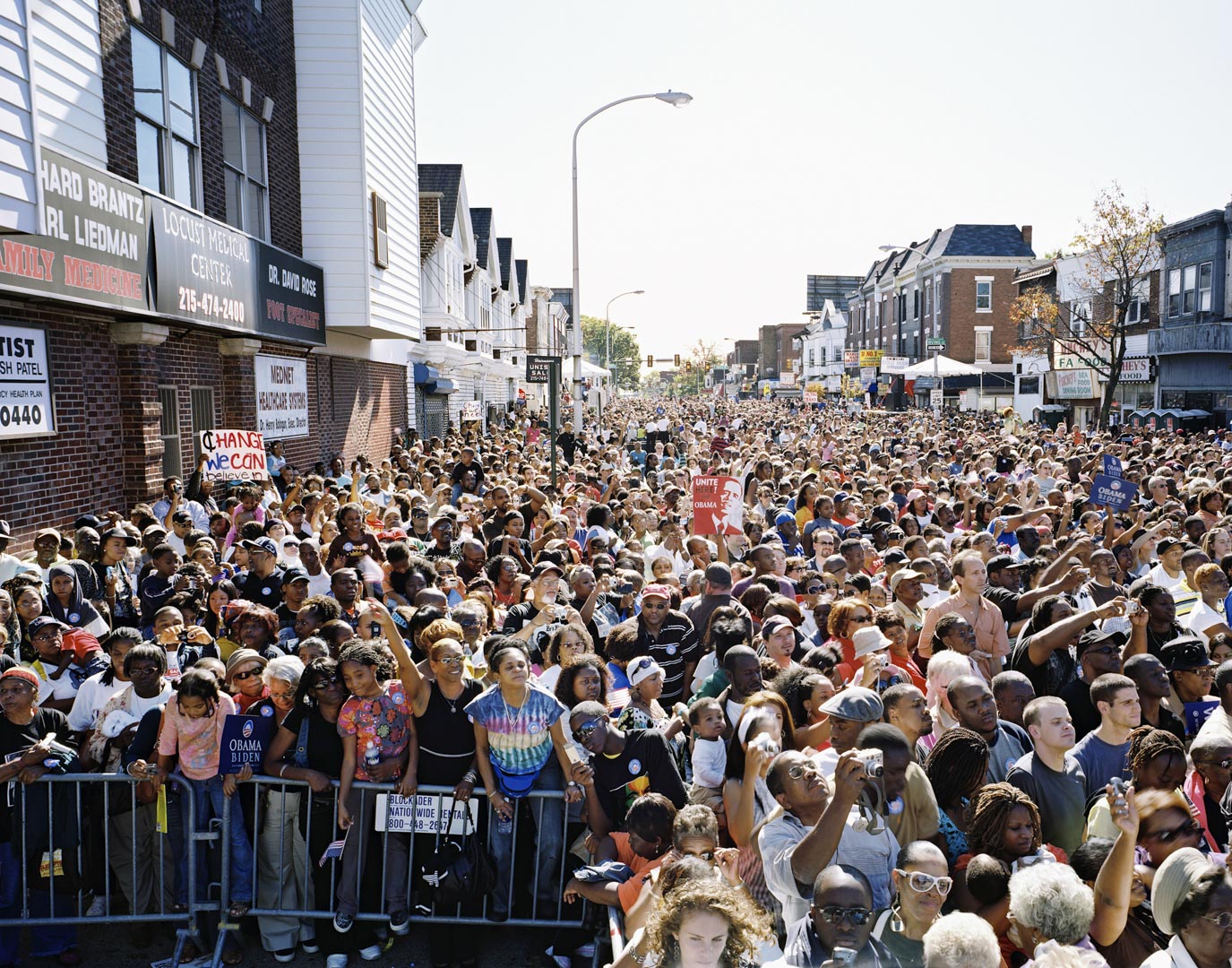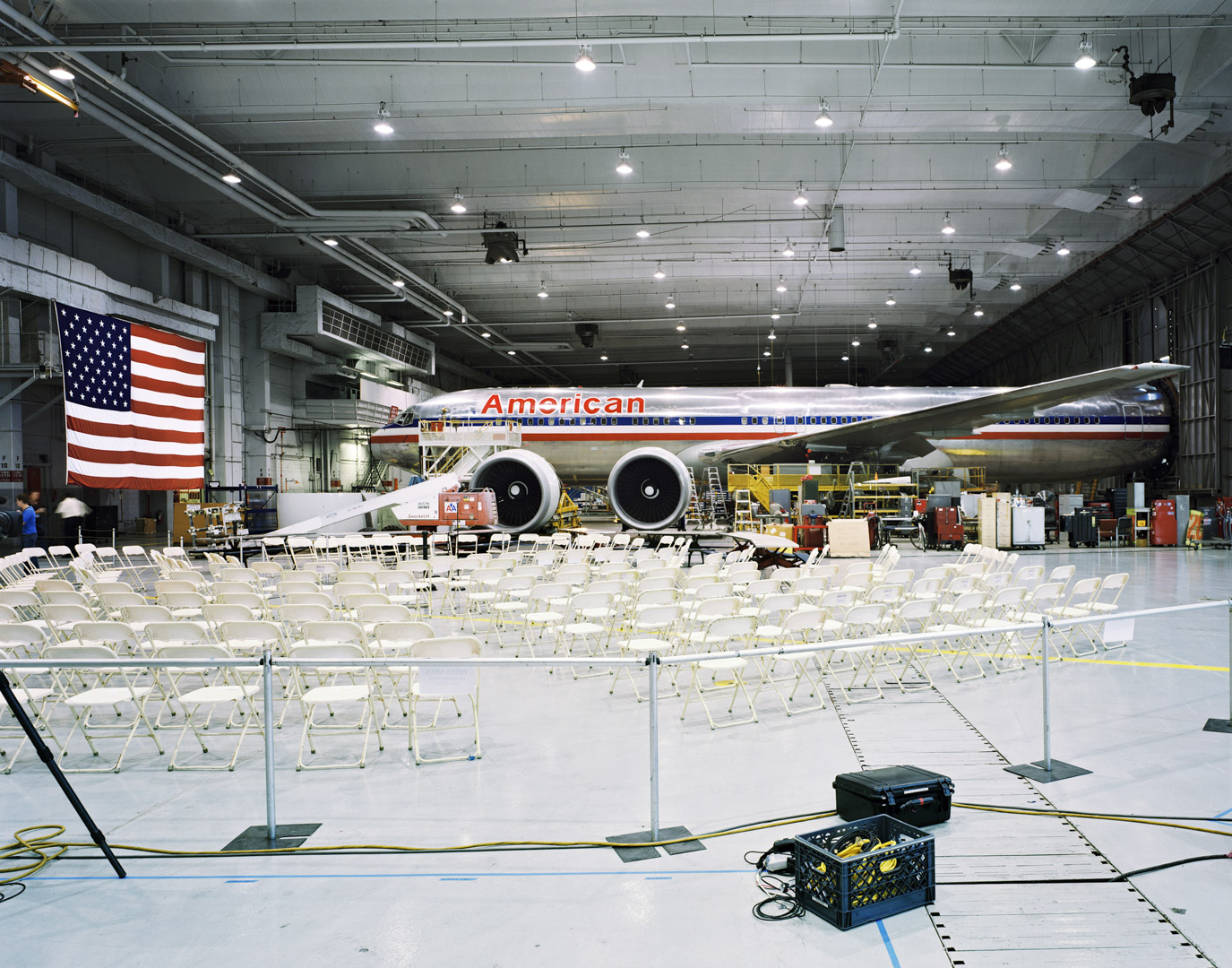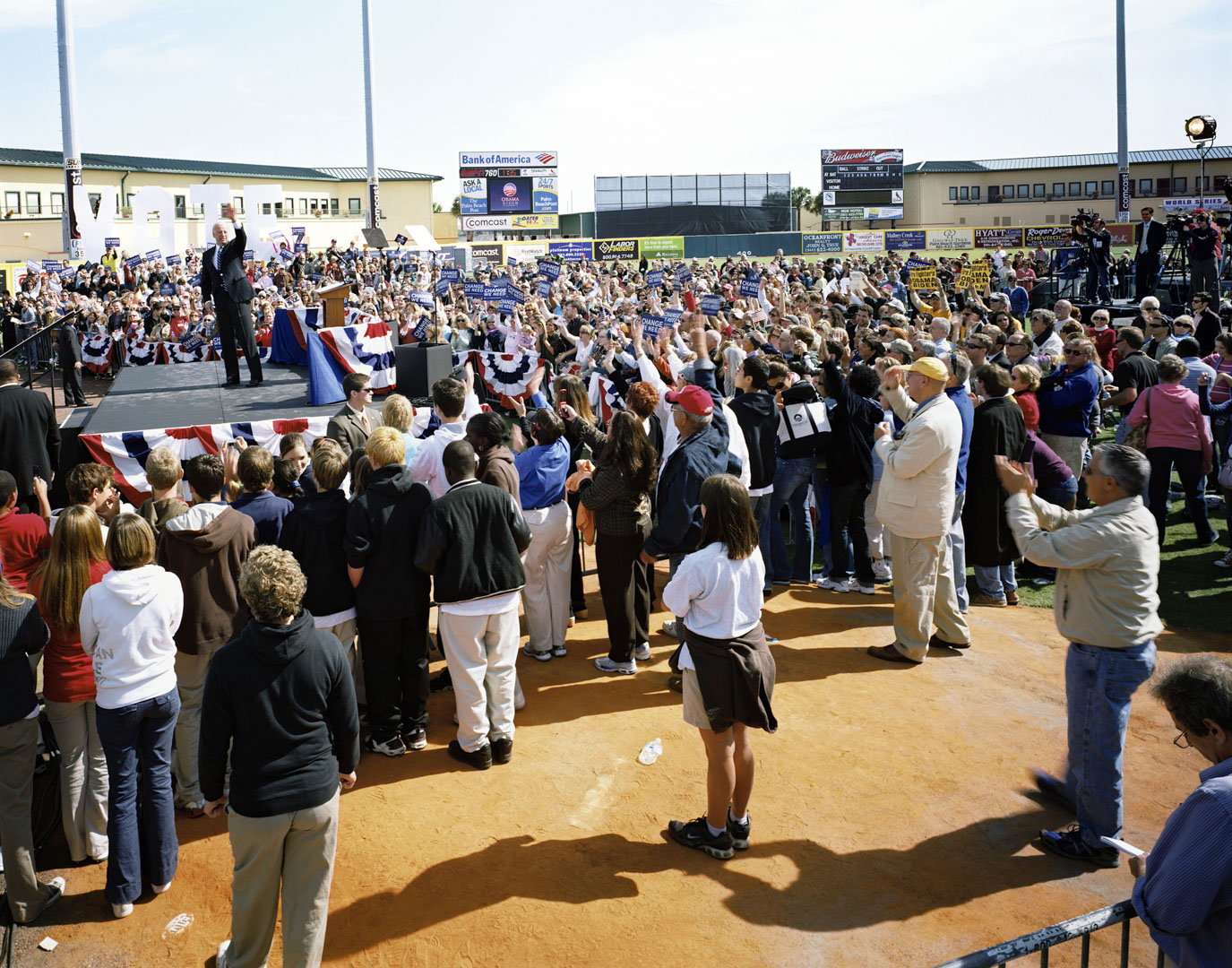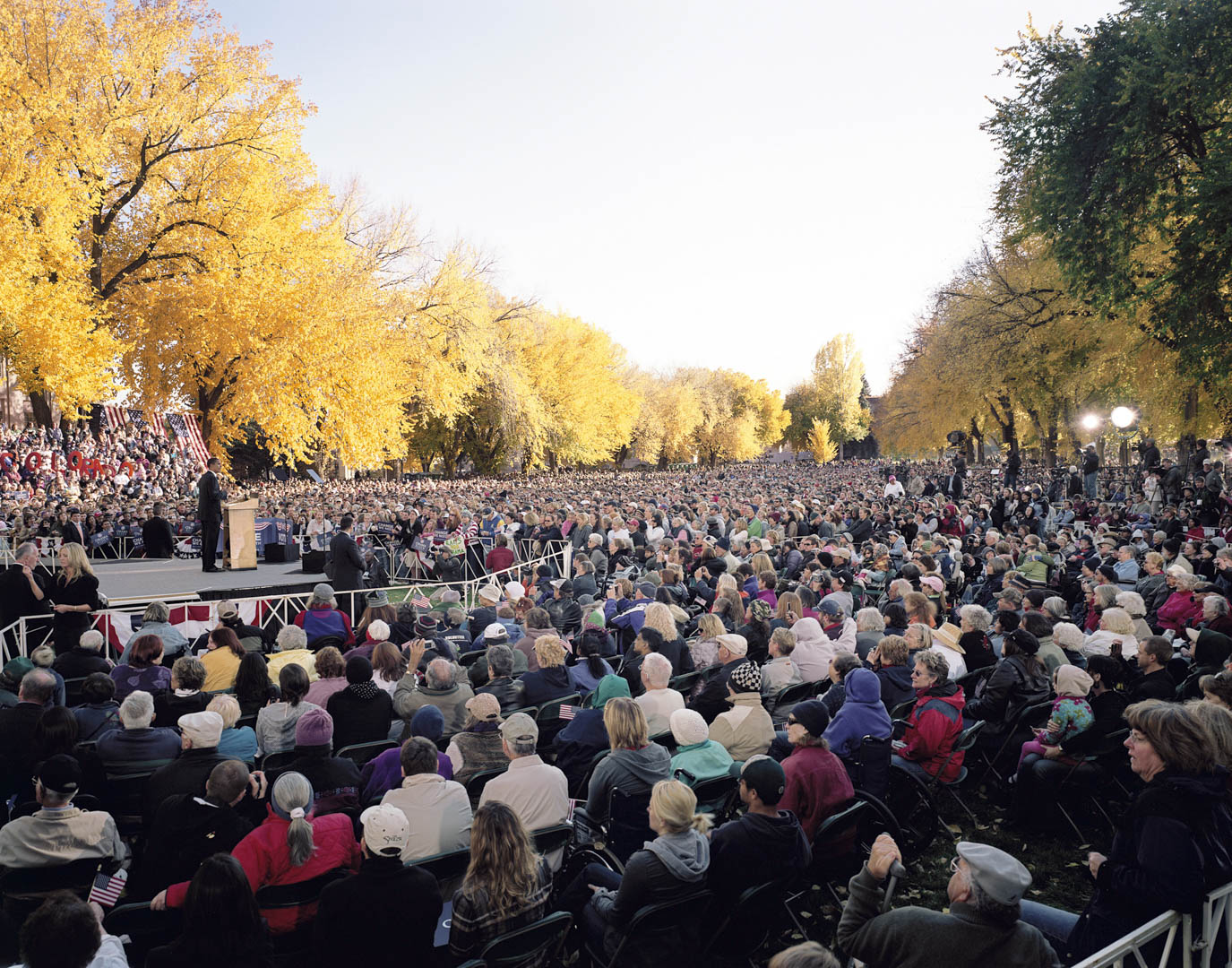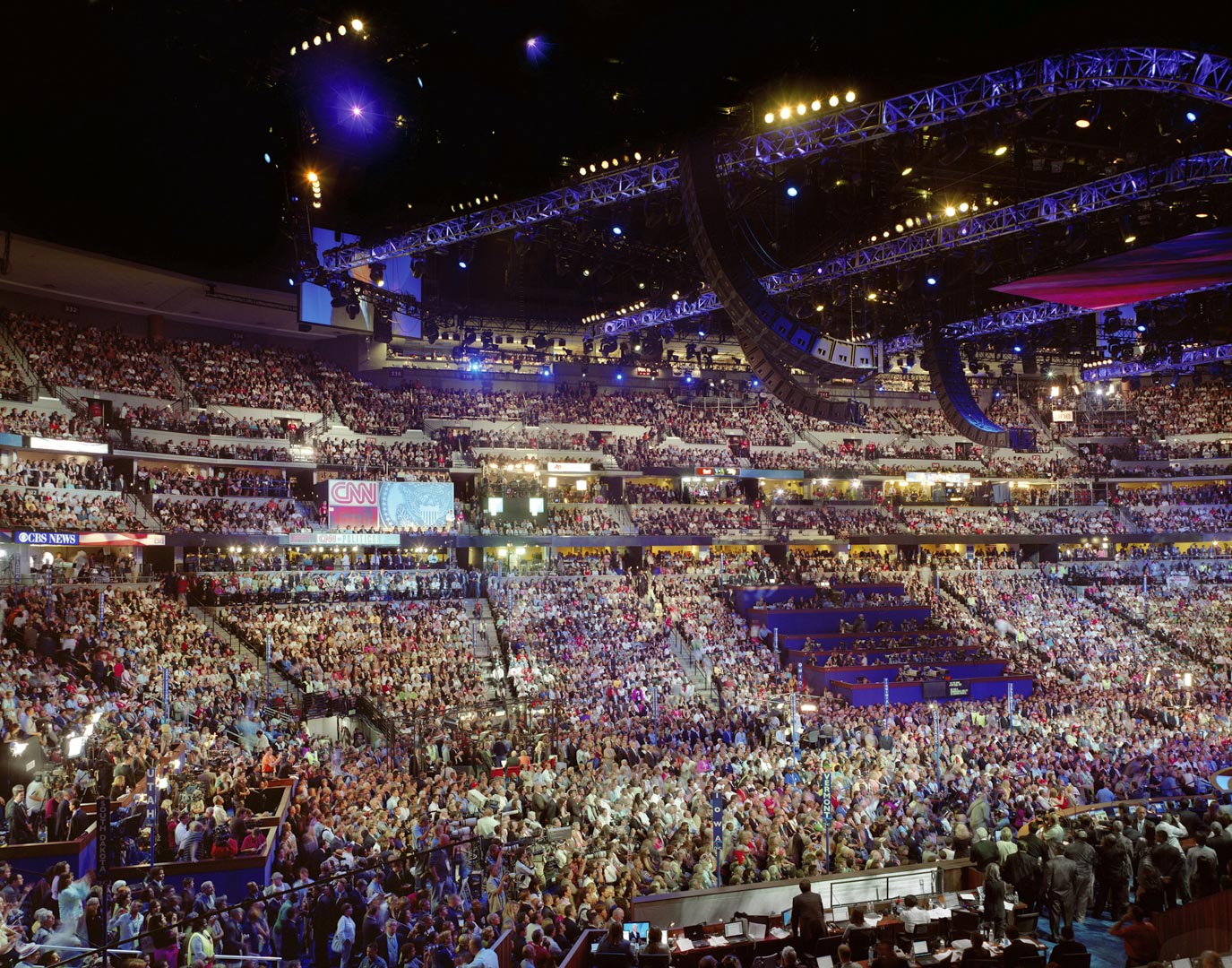Political Landscapes, USA, 2008
“This series belongs to a work that I undertook for several years on the different symbolic places of the political life ( TV sets, headquarters of political parties, meeting halls). I highlight two things : firstly I photograph major places of current political life from a historical and documentary point of view, secondly I examine in a critical way the places where mediatized images are generated. Before this, a work on the 2007 French presidential campaign was delivered by the Agency VU and published weekly by the French newspaper “Le Monde” for seven weeks before the first round of the presidential election. I decided then to work in partnership with the Picture tank cooperative on one of the most important political event of this beginning of this century : the 2008 American presidential campaign. In this series that recounts the last three months of the American presidential campaign, I focus on the singular places where each candidate and his campaigners meet.
These photographs reveal shows and tricks, and tries to figure out the way images are used in the current political life. I aim for depicting different processes implemented by this outstanding campaign. Huge rallies gather tens of thousands of spectators in which everything is controlled. Campaign teams select specific places and grant it each media ( TV, radio, photographers, newspapers) according to the way they are expected to cover the rally. Television is at the heart of the “arena”, photographers stand up in front of campaigners flags whereas radios sit alongside the most noisy campaigners groups. This new kind of rally tries to make believe that there is a closeness between the candidate and the common citizen who’s considered the main target of any political communication. As a result, these forest places are supposed to be perfectly genuine, but betray in fact, better than the great political shows or anything else, the communicational issues of political life and the fictional aspects of such a controlled presidential campaign.”
Jean-Robert Dantou
